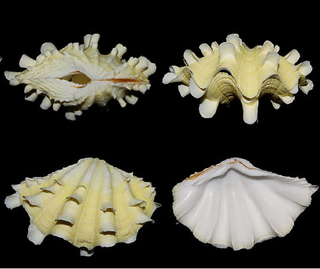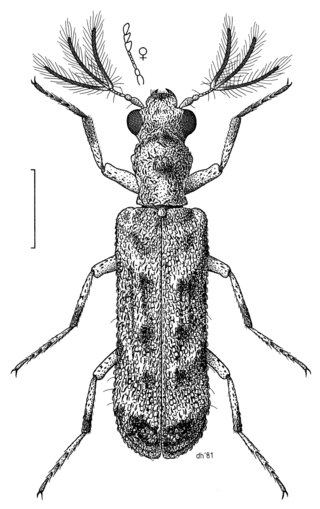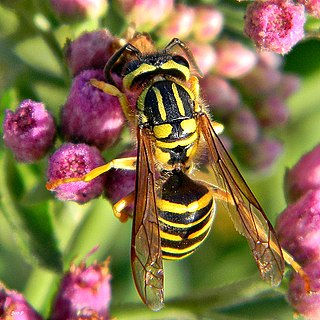
The sugar apple or sweetsop is the edible fruit of Annona squamosa, the most widely grown species of Annona and a native of tropical climate in the Americas and West Indies. Spanish traders aboard the Manila galleons docking in the Philippines brought it to Asia. The fruit is spherical-conical, 5–10 centimetres in diameter and 6–10 cm long, and weighing 100–240 grams, with a thick rind composed of knobby segments. The color is typically pale green through blue-green, with a deep pink blush in certain varieties, and typically has a bloom. It is unique among Annona fruits in being segmented; the segments tend to separate when ripe, exposing the interior.

Annona squamosa is a small, well-branched tree or shrub from the family Annonaceae that bears edible fruits called sugar-apples or sweetsops. It tolerates a tropical lowland climate better than its relatives Annona reticulata and Annona cherimola helping make it the most widely cultivated of these species. Annona squamosa is a small, semi-(or late) deciduous, much-branched shrub or small tree 3 to 8 metres tall similar to soursop.

Tridacna squamosa, known commonly as the fluted giant clam and scaly clam, is a species of bivalve in the family Cardiidae.

The scaly-naped pigeon, also known as the red-necked pigeon, is a bird belonging to the family Columbidae. The species occurs throughout the Caribbean.

MicroRNA (miRNA) precursor miR156 is a family of plant non-coding RNA. This microRNA has now been predicted or experimentally confirmed in a range of plant species. Animal miRNAs are transcribed as ~70 nucleotide precursors and subsequently processed by the Dicer enzyme to give a ~22 nucleotide product. miR156 functions in the induction of flowering by suppressing the transcripts of SQUAMOSA-PROMOTER BINDING LIKE (SPL) transcription factors gene family. It was suggested that the loading into ARGONAUTE1 and ARGONAUTE5 is required for miR156 functionality in Arabidopsis thaliana. In plants the precursor sequences may be longer, and the carpel factory (caf) enzyme appears to be involved in processing. In this case the mature sequence comes from the 5' arm of the precursor, and both Arabidopsis thaliana and rice genomes contain a number of related miRNA precursors which give rise to almost identical mature sequences. The extents of the hairpin precursors are not generally known and are estimated based on hairpin prediction. The products are thought to have regulatory roles through complementarity to mRNA.
Aleuritopteris squamosa is a species of fern in the family Pteridaceae. It is endemic to China. Its natural habitats are temperate forests and subtropical or tropical moist lowland forests. It is threatened by habitat loss.
Pouteria squamosa is a species of plant in the family Sapotaceae. It is found in Guatemala and Mexico.

Drosera erythrorhiza, the red ink sundew, is a perennial tuberous species in the carnivorous plant genus Drosera that is endemic to Western Australia. It grows in a rosette and is distinguished from the other species in section Erythrorhiza by its many-flowered cymose inflorescences with up to 50 individual flowers. D. erythrorhiza was first described by John Lindley in his 1839 publication A sketch of the vegetation of the Swan River Colony. In 1992, N. G. Marchant and Allen Lowrie described three new subspecies, thus also creating the autonym D. erythrorhiza subsp. erythrorhiza. The subspecies were separated from this variable species mostly by leaf morphology and distribution.

Euderia squamosa is a species of beetles. It is the only member of the monotypic genus Euderia and subfamily Euderiinae.
Peristernia squamosa is a species of sea snail, a marine gastropod mollusk in the family Fasciolariidae, the spindle snails, the tulip snails and their allies.

Steraspis squamosa or the Middle Eastern jewel beetle is a beetle of the Buprestidae family.
Hyperlais squamosa is a species of moth in the family Crambidae described by George Hampson in 1913. It is found in South Africa.

Vespula squamosa, or the southern yellowjacket, is a social wasp. This species can be identified by its distinctive black and yellow patterning and orange queen. This species is typically found in eastern North America, and its territory extends as far south as Central America. Within these territories, they create enormous, multiple-comb nests. The colonies may be either annual or perennial depending on the climate, and in many perennial nests, polygyny takes place. In addition, this species uses pheromones both as a sexual attractant and an alarm signal. This species feeds on insects and animal carcasses; it does not produce honey. V. squamosa, a social insect, has developed a parasitic relationship with the species V. vidua and V. maculifrons. Due to their painful, venomous stings, the species is considered a pest.
Garymunida squamosa is a species of squat lobster in the family Munididae. The males measure from 5.5 to 17.0 millimetres and the females from 5.1 to 16.4 millimetres. It is found off of Japan, Indonesia, the Admiralty Islands, northeastern Australia, New Caledonia, Loyalty Islands, and Wallis and Futuna, at depths between about 175 and 750 metres. It is also found off of Fiji and Tonga, where it resides between depths of about 350 and 590 metres.
Acanthogalathea is an extinct genus of squat lobsters in the family Galatheidae. It was extant during the Eocene and Oligocene. It contains six species:
Acanthogalathea feldmanni is an extinct species of squat lobster in the family Galatheidae. It was extant during the Eocene and Oligocene.
Acanthogalathea parva is an extinct species of squat lobster in the family Galatheidae. It was extant during the Eocene and Oligocene.

Facheiroa squamosa is a species of Facheiroa from Brazil.
Lomamyia squamosa is a species of beaded lacewing in the family Berothidae. It is found in North America.

Tetraclita squamosa, the green volcano barnacle, is a species of symmetrical sessile barnacle in the family Tetraclitidae.










